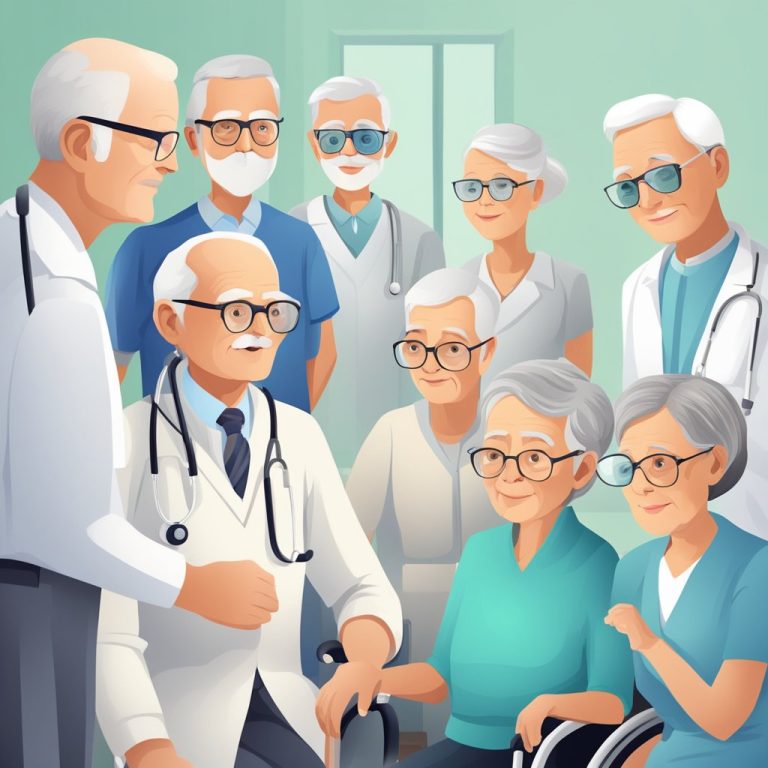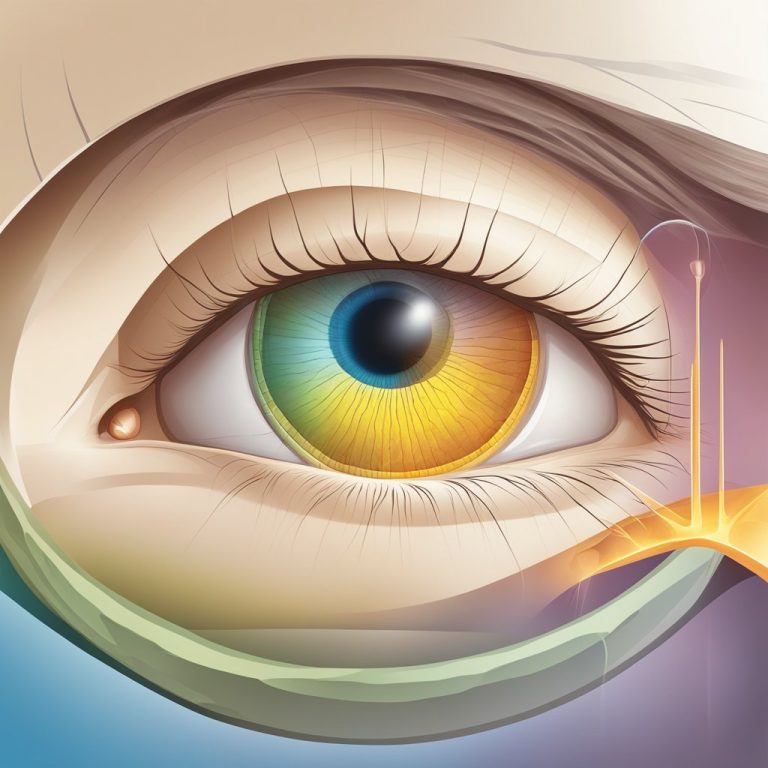Crossed Eyes: Causes, Symptoms, and Treatment Options
Setting Eyes Straight: Options for Correcting Crossed Eyes in Children and Adults

If your eyes don’t line up right, you have crossed eyes, which is also called strabismus. One or both of your eyes may turn inward, outward, up, or down because of this. When your eyes are crossed, your brain might get two different pictures. This can make your vision rough or double.
Strabismus can happen to both kids and adults, and there are many things that can cause it. Sometimes it’s because of a problem with the nerves or muscles that move the eyes. Sometimes it’s caused by a problem with the way light bends, like nearsightedness or farsightedness. Strabismus may sometimes be a sign of a more serious health problem.
It’s important to see a doctor if you or someone you know has crossed eyes. There are many ways to treat this condition, such as with glasses, eye training, or surgery. Many people who have strabismus can get better eyes and live a better life with the right treatment.
What You Should Know
- Strabismus, which means “crossed eyes,” is a condition in which your eyes don’t line up straight. This can make it hard to see clearly or give you double vision.
- Strabismus can be brought on by many things, and both kids and adults can get it.
- Strabismus can be fixed with glasses, eye exercises, or surgery, and with the right care, many people are able to get their vision back to normal.
How to Understand Strabismus
If you or someone you know has been told they have strabismus, you should learn what it is and how it can affect your eyesight. People who have strabismus have eyes that are not lined up properly with each other. This can lead to double vision, not seeing straight, and even lazy eyes (amblyopia).
Many kinds of strabismus
Esotropia means that the eye turns inward, exotropia means that the eye turns outward, hypertropia means that the eye turns upward, and hypotropia means that the eye turns downward. Strabismus that is present at birth is called congenital strabismus.
Why and how it happens
Strabismus can be caused by a lot of things, such as having a family history of it, having a brain tumor, having cerebral palsy, having thyroid disease, being hurt, or losing your sight. There are times when the cause of strabismus is unknown.
Symptoms and How to Diagnose It
The most common sign of strabismus is eyes that are not lined up properly. This can lead to double vision, trouble judging depth, and tired eyes. A full eye exam that includes a visual acuity test, a cover test, and a measurement of eye alignment are usually needed to diagnose strabismus.
Getting medical help right away is important if you think you or someone you know has strabismus. Early evaluation and treatment can help keep problems from getting worse and make things better.
Choices for Treatment
There are a few different ways to treat crossed eyes if you have been told you have them. There are two types of treatments for strabismus: those that don’t involve surgery and those that do. Your ophthalmologist or eye surgeon will tell you which treatment is best for you based on how bad your situation is and what you want.
Actions that don’t involve surgery
Most of the time, non-surgical treatments are the first choice for people with crossed eyes. Some of these are eye training, glasses, patching, and prism lenses.
Glasses can help fix vision problems that could be making your eyes cross. Putting a patch over the stronger eye can help the weaker eye work harder, which can lead to better alignment over time. Light is bent in a way that helps the eyes work together by prism glasses. Vision training and eye exercises can help you get better at controlling and coordinating your eye muscles.
Botulinum toxin, which is better known as Botox, can also be used to treat crossed eyes without surgery. With Botox shots, the muscles that are pulling the eye out of place can be made weaker. This lets the other muscles move the eye more freely.
Surgery for Strabismus
People who don’t get better with non-surgical treatments or who have a serious case of crossed eyes can get strabismus surgery. The eye muscles are moved around during surgery to make the eyes look better aligned. In strabismus surgery, different methods are used, such as training for the eye muscles and techniques that use adjustable stitches.
With adjustable suture methods, sutures are used that can be changed after surgery to make sure the eyes are perfectly aligned. You can work out your eye muscles before or after surgery to make them stronger and more coordinated.
Care After Surgery
If you had surgery to correct strabismus, it is important to do what your optometrist or eye surgeon tells you to do. After surgery, problems can happen, like getting an infection or losing a lot. It’s important to tell your doctor right away about any strange signs or pain.
Overall, there are a number of ways to treat crossed eyes, such as non-surgical methods and surgery for strabismus. Based on how bad your situation is and what you want, your doctor will tell you which treatment is best for you. Most people with crossed eyes can get their eyes straightened out and better vision with the right care.
Getting by with strabismus
It can be hard to live with strabismus, but there are ways to get used to it and still enjoy life. These tips will help you deal with your situation.
Getting used to changes in sight
Strabismus can make it hard to see in 3D and judge distances because it can affect your depth awareness and binocular vision. Additionally, you might see things fuzzy or twice, get headaches, and strain your eyes. To better handle these signs, it is important to see a pediatric optometrist or expert for regular eye exams. You can get glasses or contacts from them to fix your vision, and they can help you improve your vision.
You can also do workouts to make your eye muscles stronger and your two-eye vision better. As part of these activities, you might have to focus on things that are farther away, follow moving things, and close one eye to strengthen the other. You should talk to your doctor before you start any workout routine.
Help and Resources
Strabismus can make you feel alone, but there are people and groups that can help you deal. When you join a support group, you can connect with people who know what you’re going through. Online sites and social media groups are also good places to find people who have strabismus and talk to them.
There are also groups that help people with strabismus by giving them information and tools. Parents and kids who have strabismus can get a lot of help from the American Association for Pediatric Ophthalmology and Strabismus (AAPOS). The group gives advice on how to avoid getting strabismus and has a list of pediatric eye doctors and strabismus specialists.
To sum up, having strabismus can be hard to deal with, but you can handle it and still live a full life with the right help and tools. Getting regular eye checks, working out, and joining a support group can help you get used to changes in your vision and make your life better.
Questions People Ask Often
What causes strabismus in both kids and adults?
There are several things that can lead to strabismus, or crossed eyes. Kids may do this because their muscles aren’t balanced or are weak, or there may be a problem with their brain that makes it hard for them to control their eye movement. Strabismus can happen to people after they’ve been hurt, had a stroke, or have a health problem like diabetes. It could also be caused by a problem with a nerve or muscle.
What can be done to fix or treat strabismus?
The best way to treat strabismus relies on what’s causing it in the first place. Wearing glasses or contacts can sometimes help fix the problem. Some people need surgery to fix the muscle imbalance or weakness that is causing their eyes to cross. Some people may also be told to get vision training to help them improve their eye coordination.
Is suddenly seeing two things at once a sign of strabismus?
Sudden double vision may be a sign of strabismus, especially if it comes with other signs like headaches or eye pain. It is important to see an eye doctor right away if you suddenly have double vision so they can figure out what is wrong.
If you don’t treat strabismus, can it cause other problems?
If you don’t fix strabismus, it can get worse and cause problems like amblyopia (lazy eye), which can make it impossible to see clearly again. It can also make it hard to see things in depth and make it hard to do normal things like reading or driving.
When do you usually notice that a baby has strabismus?
Babies as young as a few months old can be identified with strabismus. Going to the eye doctor regularly to check your child’s eyes is important to make sure that any vision problems are found early and fixed properly.
Does strabismus meet the criteria for a condition under health rules?
Health rules do not always say that strabismus is a disability. But if it’s bad enough that it makes it hard for you to do normal things, you might be able to get disability payments. To find out if you are eligible, you should talk to both your doctor and a disability lawyer.






